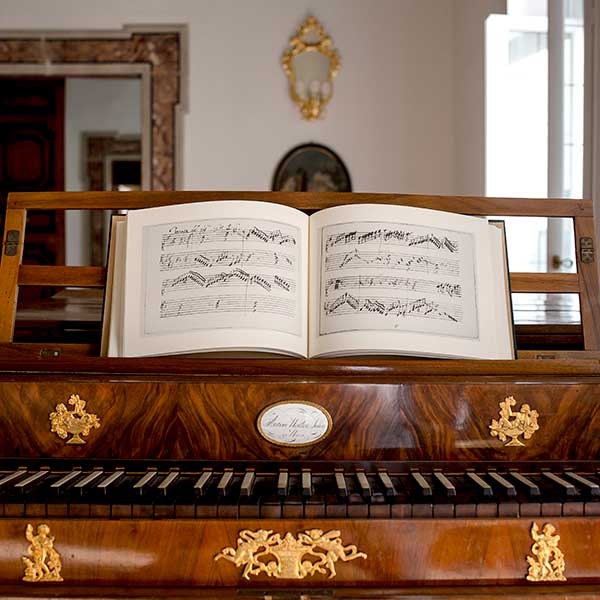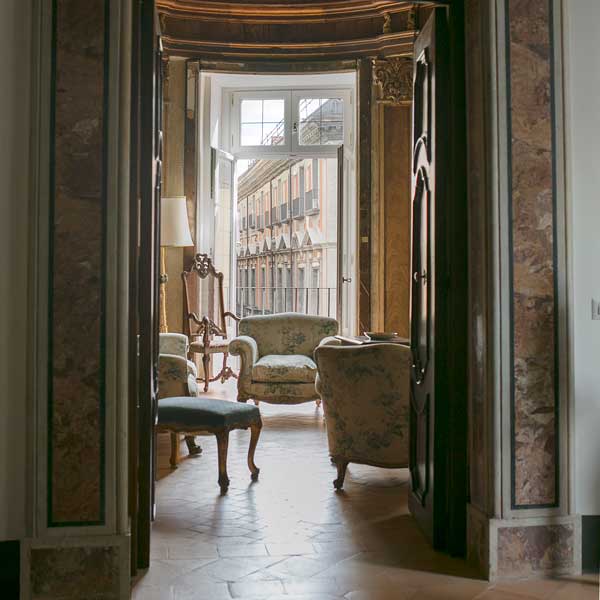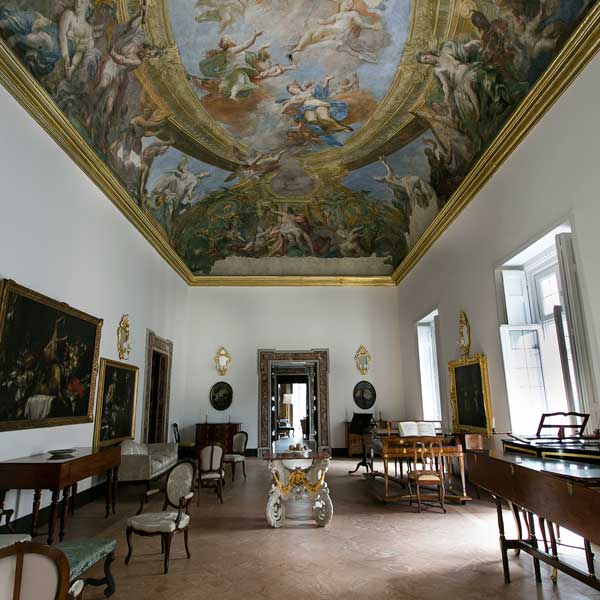Project Description
_Positano Palace
Positano Palace dates back to the 17th century and is located in a central urban area near via Toledo and other noble buildings such as Palazzo Carafa di Maddaloni and Palazzo Doria d’Angri.
The competition between the aristocratic families led some members of the Positano family (bequested with the titles of marquises and dukes) to commission the famous Neapolitan artist Giacomo del Po to create the exceptional decorative cycle dating to the first decade of the 18th century.
On the high vault of the hall of Positano Palace, inside the majestic central apartment is the fresco depicting the allegory of the Triumph of Justice and Equity, an exemplary allusion to the offices held during the Austrian viceroyalty in the judicial and political sphere by some members of the family who were appointed “Royal Councilors”.
The central salon is followed by a hall with an arch covered in polychrome marble and a sitting room with an oval roof; the only surviving example in Naples of this type of environment from the first half of the eighteenth century.
Palazzo Positano dates back to the 17th century and is located in a central urban area near via Toledo and other noble buildings such as Palazzo Carafa di Maddaloni and Palazzo Doria d’Angri.
The competition between the aristocratic families led some members of the Positano family (bequested with the titles of marquises and dukes) to commission the famous Neapolitan artist Giacomo del Po to create the exceptional decorative cycle dating to the first decade of the 18th century.
On the high vault of the hall, inside the majestic central apartment is the fresco depicting the allegory of the Triumph of Justice and Equity, an exemplary allusion to the offices held during the Austrian viceroyalty in the judicial and political sphere by some members of the family who were appointed “Royal Councilors”.
The central salon is followed by a hall with an arch covered in polychrome marble and a sitting room with an oval roof; the only surviving example in Naples of this type of environment from the first half of the eighteenth century.



